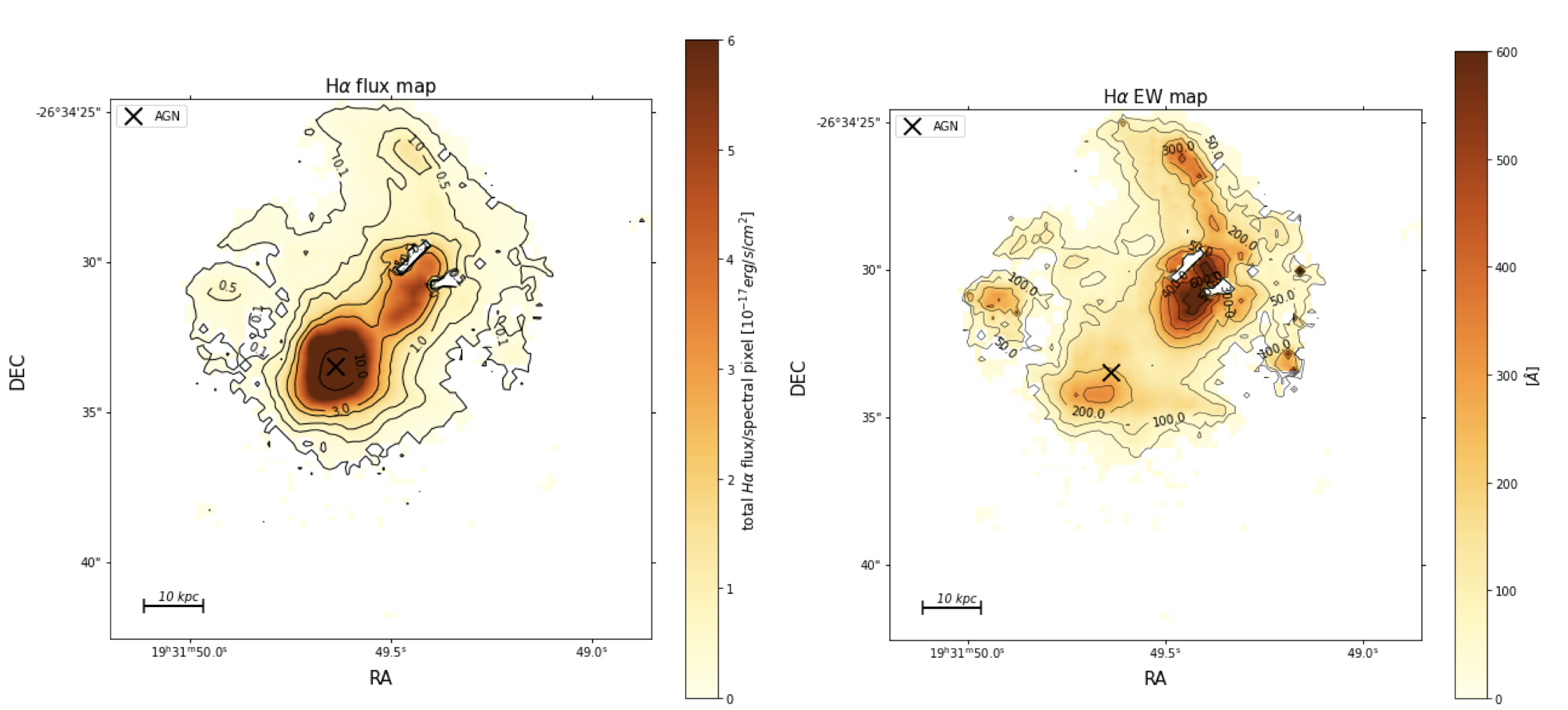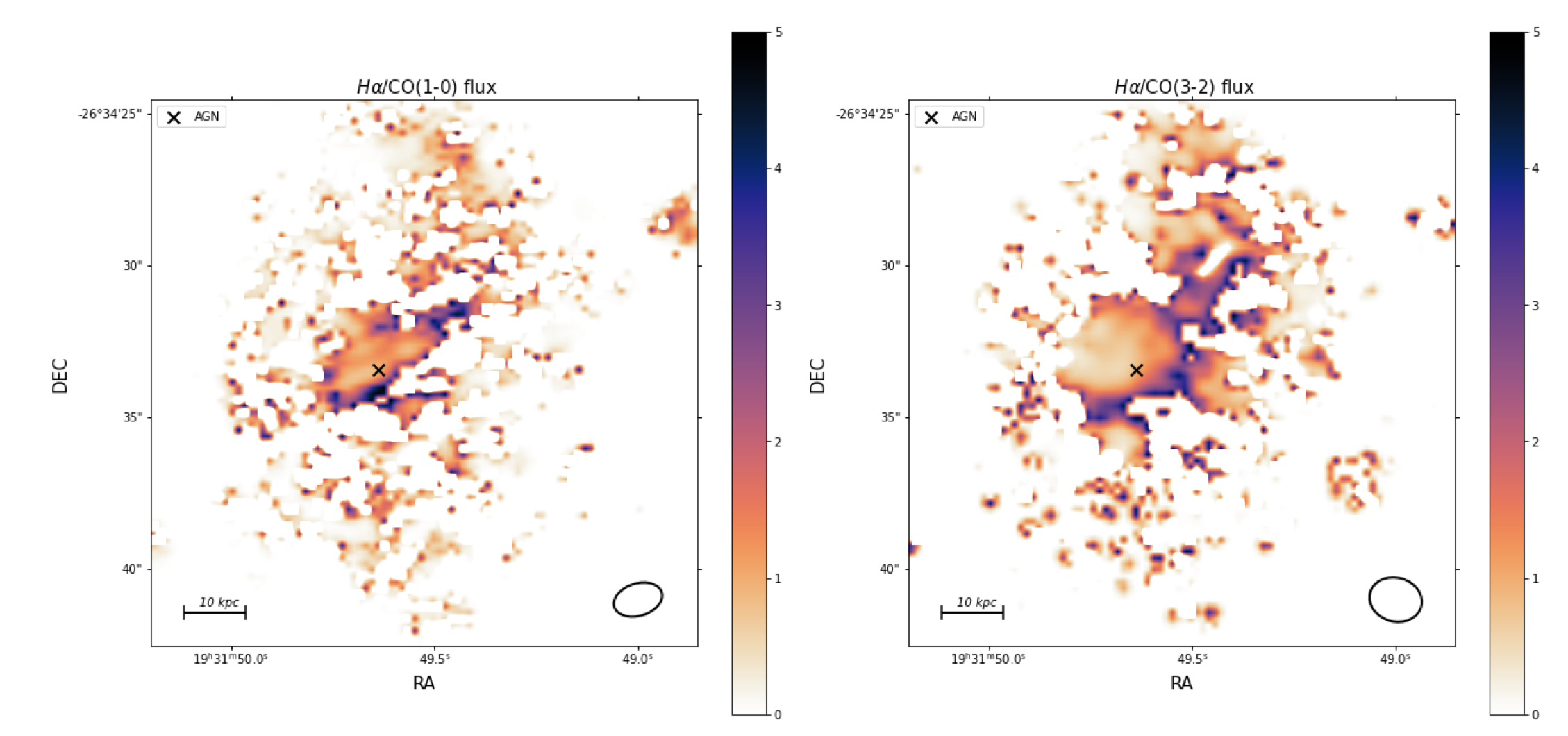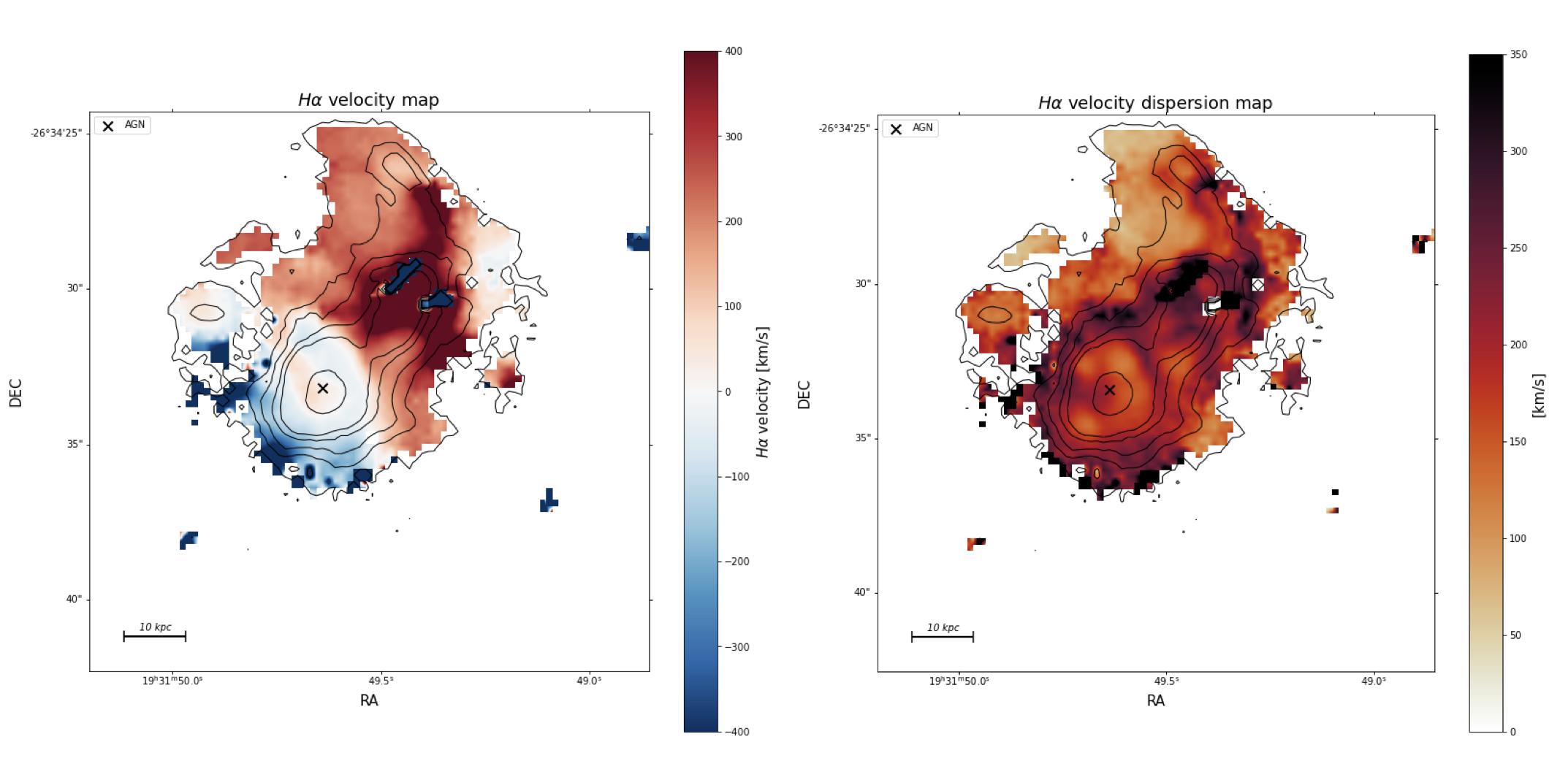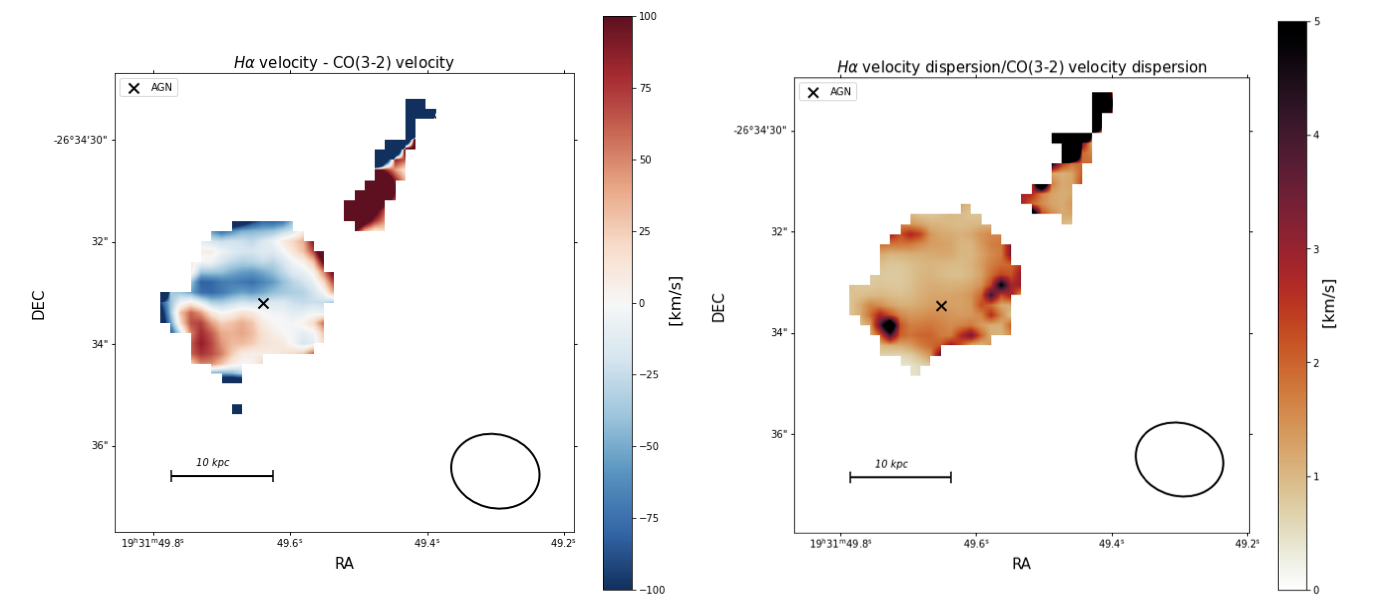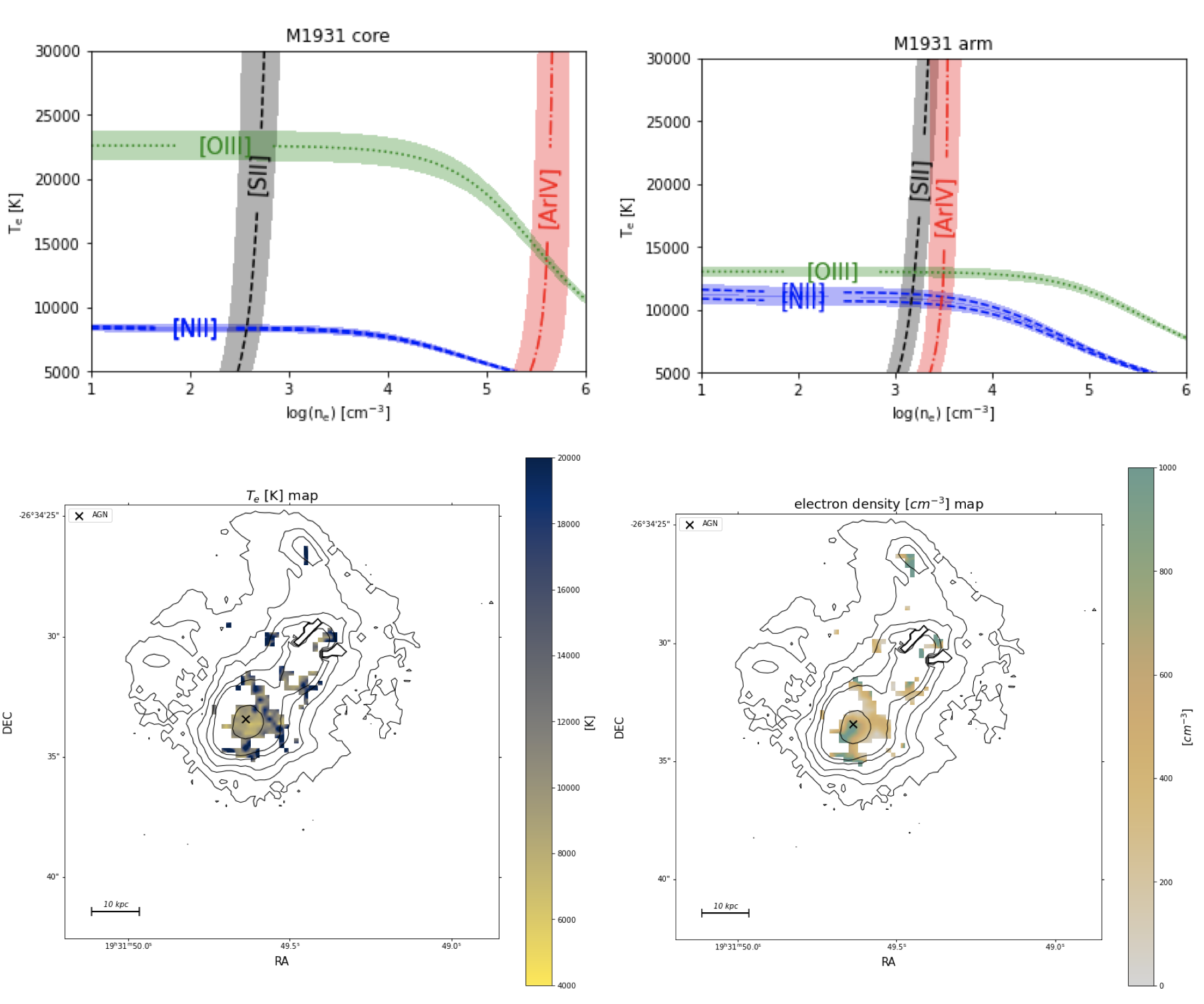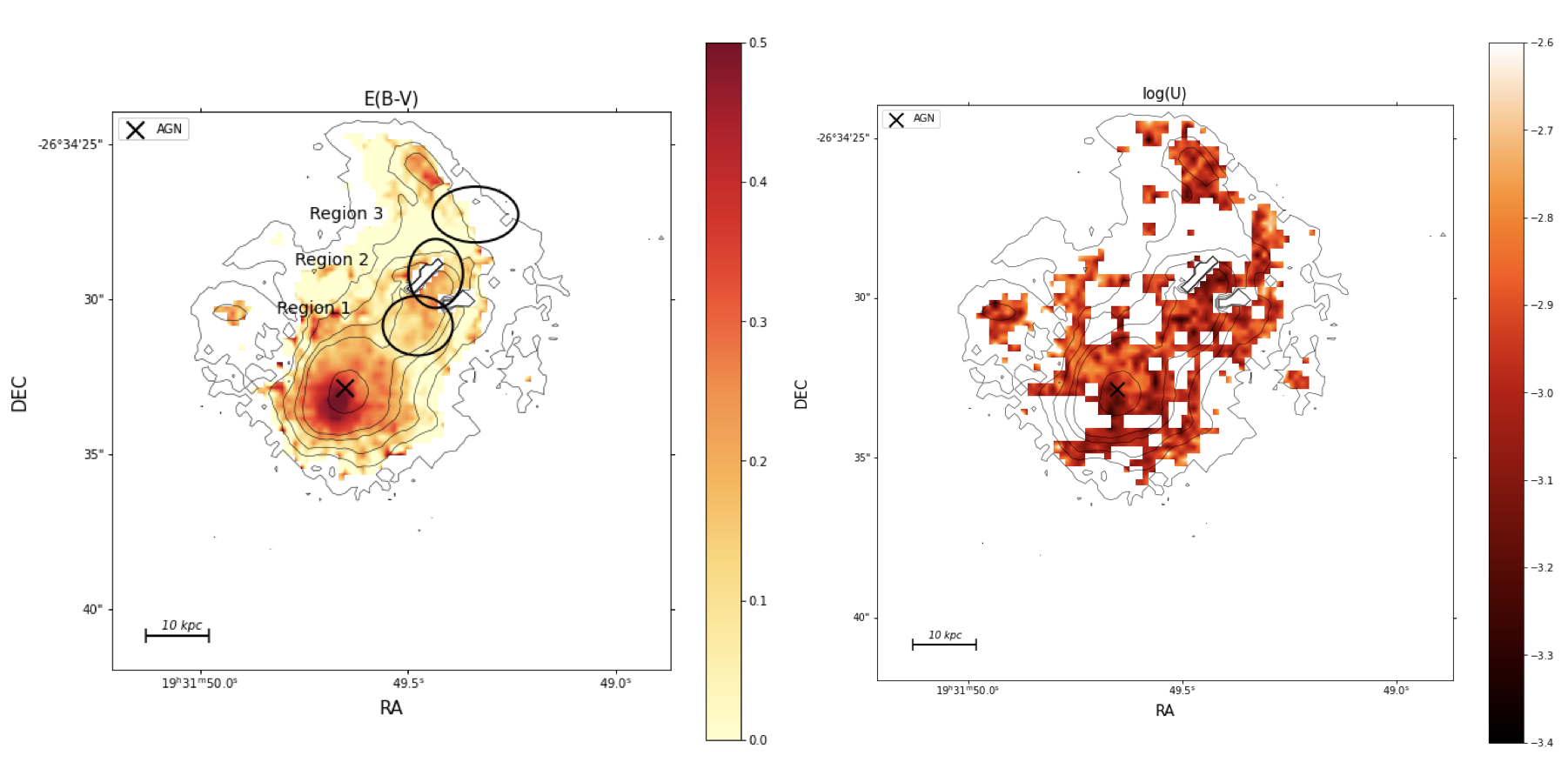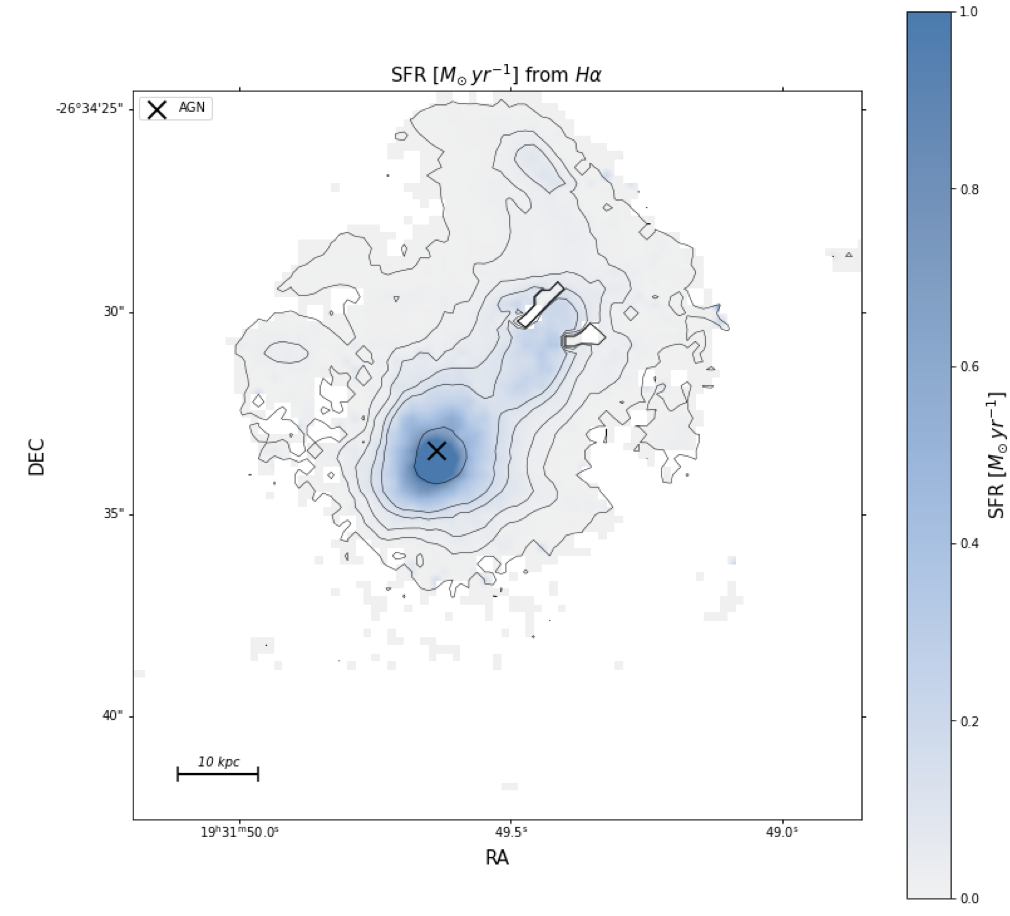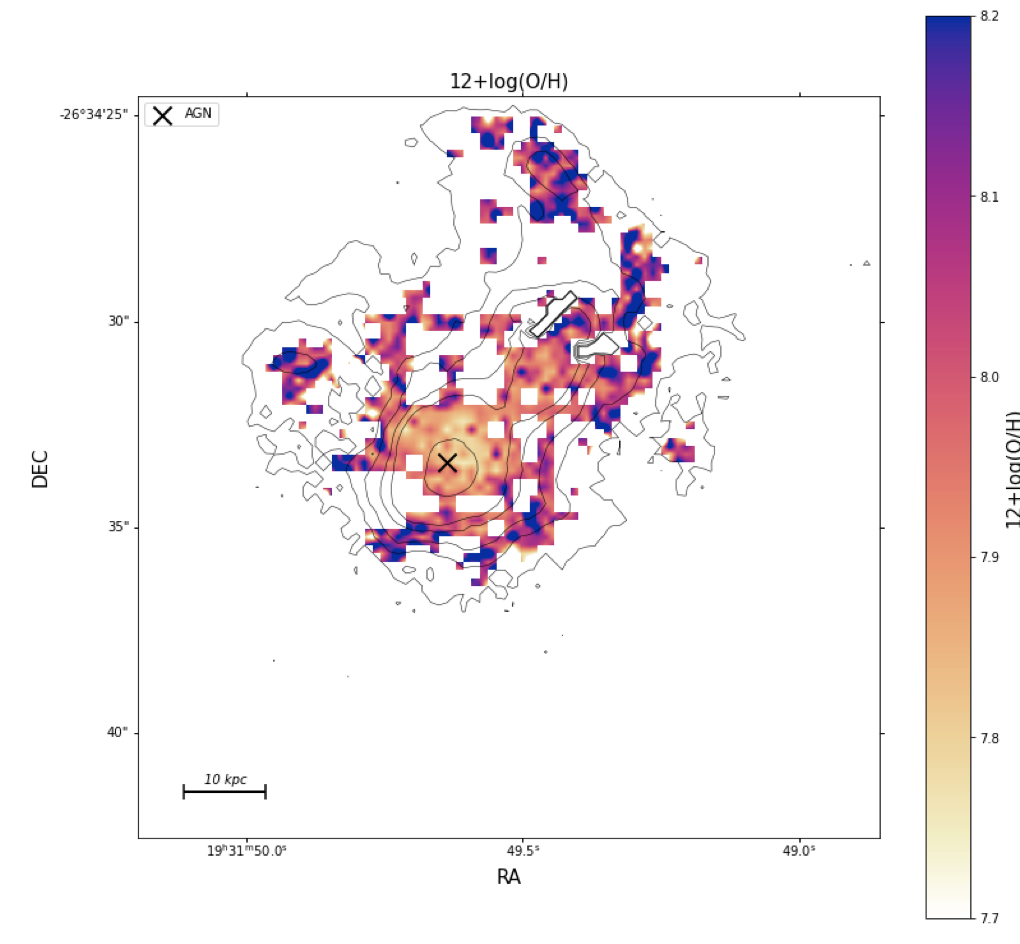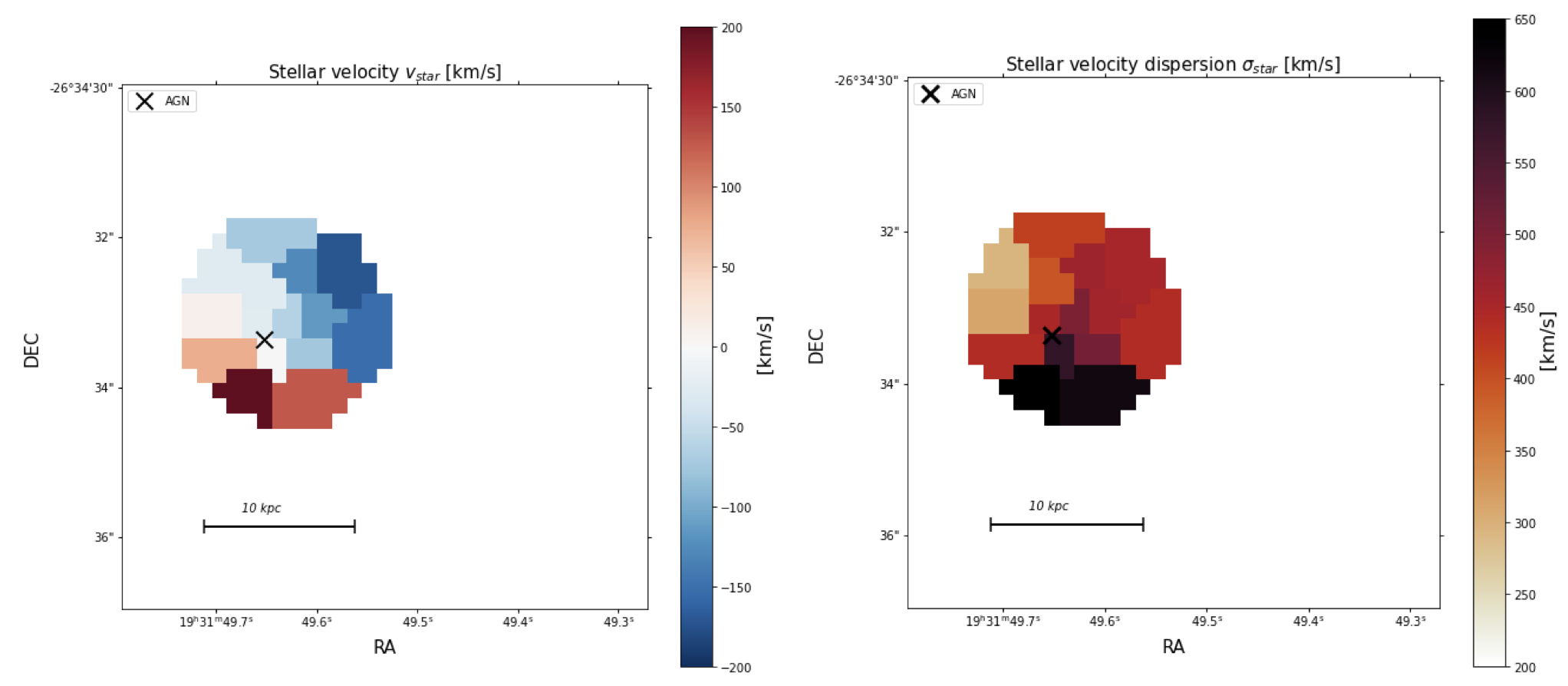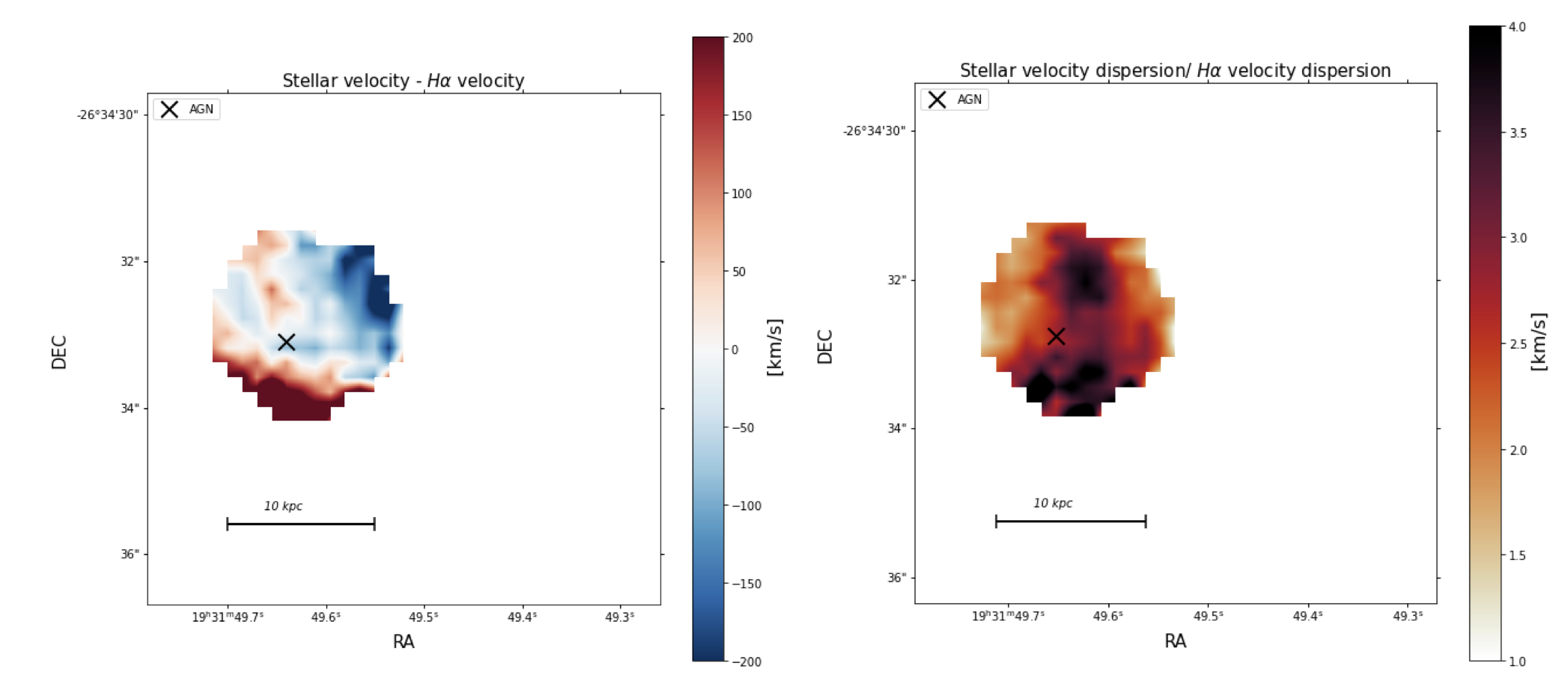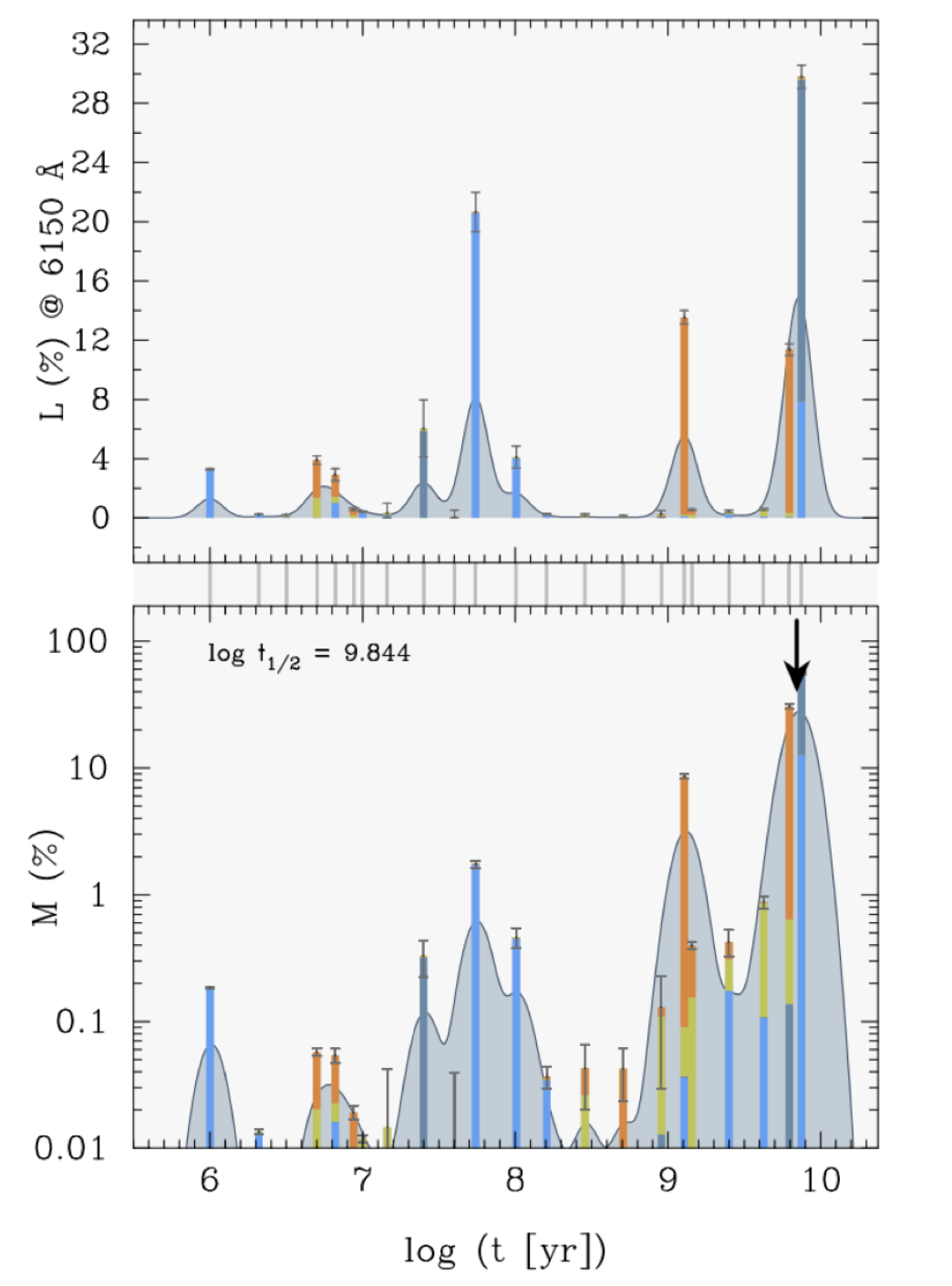Brightest Cluster Galaxy (BCG) in cool-core cluster MACS 1931.8-2635 at z=0.35
Data:
- ESO-VLT MUSE Integral Field Spectroscopy
- data reduction: MUSE pipeline (Weilbacher et al. 2014) & ZAP (Soto et al. 2016)
- ALMA data (Fogarty et al. 2019)
Data analysis:
- population spectral synthesis codes FADO (Gomes & Papaderos et al. 2017) + Porto3D (Papaderos et al. 2013, Gomes et al. 2016)
- MUSE Python Data Analysis Framework (Bacon et al. 2016)
- Ionised gas properties: [OII]λ3727, Hβ, [OIII] λ5007, Hα, [NII] λ6584, and [SII]λ6718, 6732 fluxes + photoionisation codes (Pérez-Montero 2014)
- Ionization mechanisms: diagnostic diagrams + shock models (Allen et al. 2008)
- Star formation history via FADO and Porto3D
- Stellar kinematics: pPXF (Cappellari & Emsellem 2004) via GIST pipeline (Bittner et al. 2019)
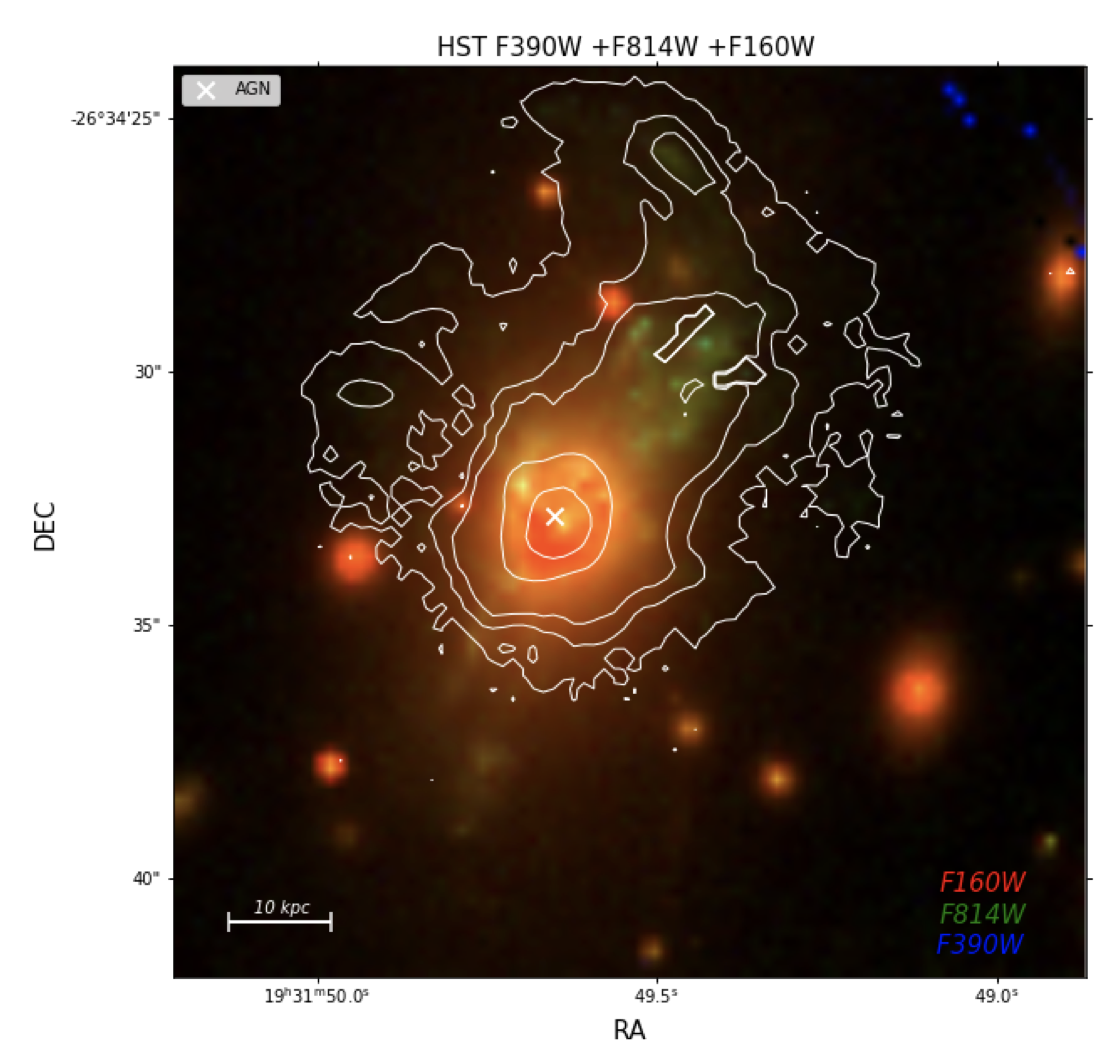
HST composite RGB image of the M1931 BCG: the F160W image is shown in red, the F814W in green, and the F390W in blue. The white contours show the Hα flux intensity, as measured from MUSE. The cross shows the location of the AGN.


